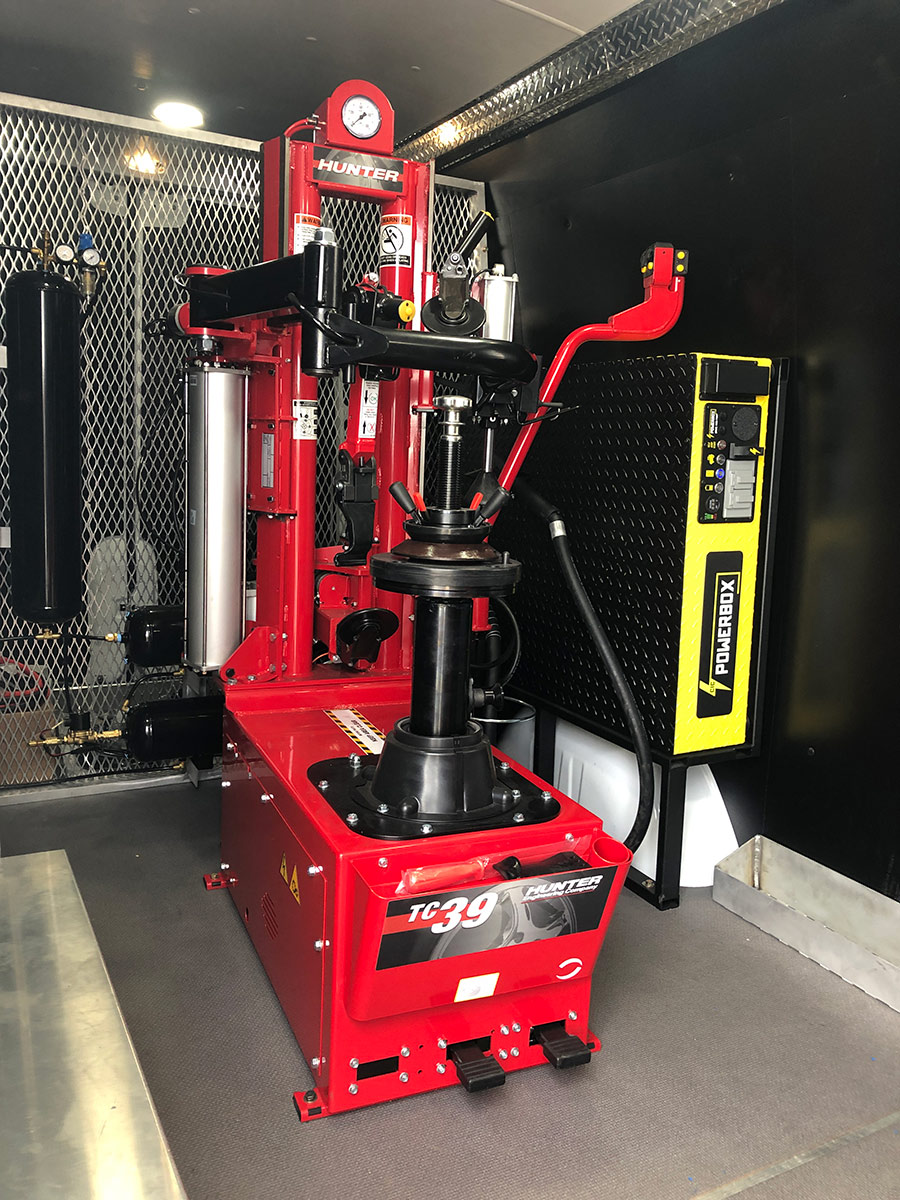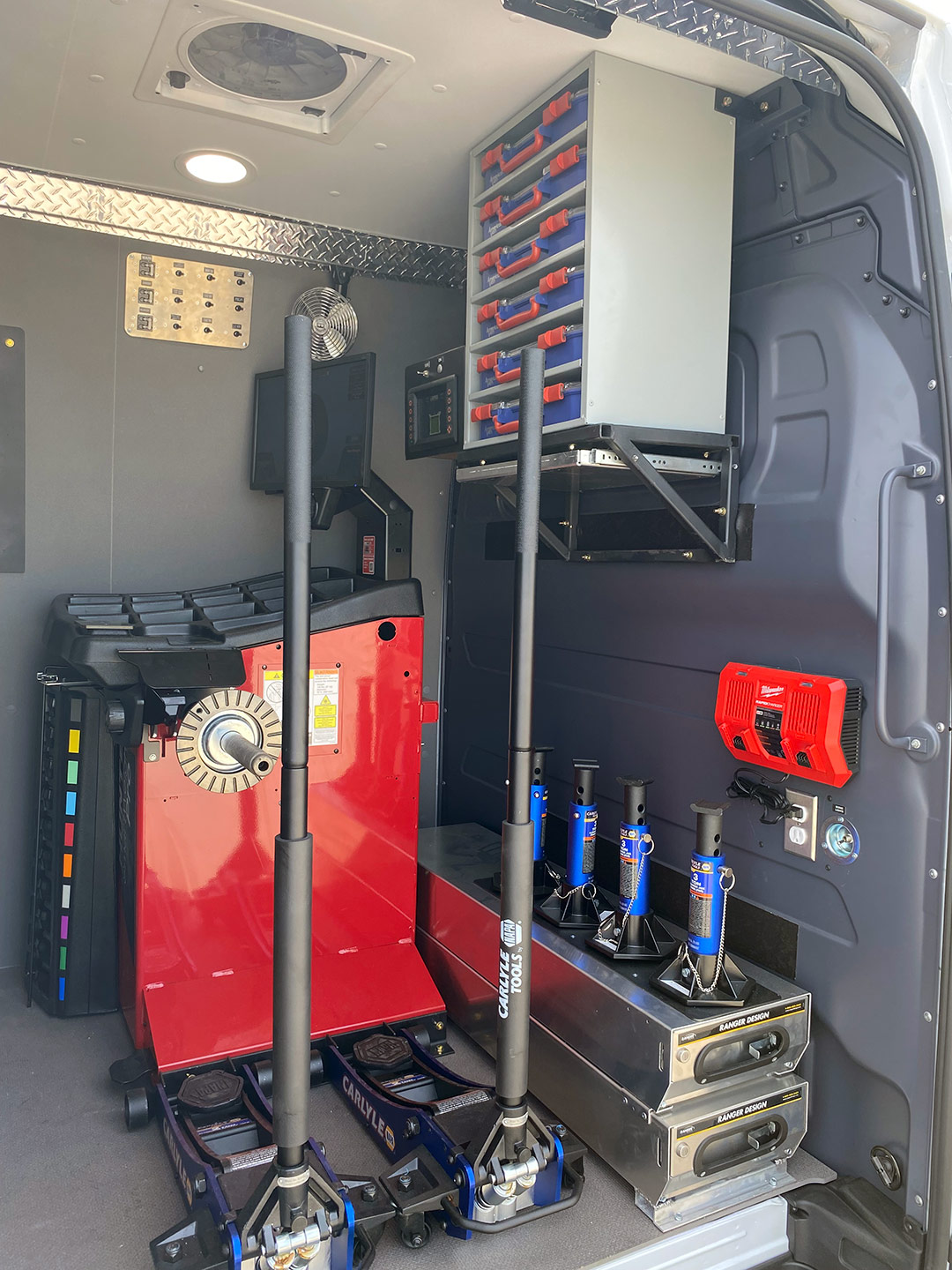Relied On Mobile Tire Service Las Vegas - On-Time Solutions
Relied On Mobile Tire Service Las Vegas - On-Time Solutions
Blog Article
Tire Solution: Proven Techniques for Optimum Tire Upkeep and Care
From making sure correct tire pressure to routine turning and placement, there are tested approaches that can substantially expand the life-span of your tires and enhance overall driving experience. Let's dig right into the globe of tire solution and find the keys to maintaining your tires in first-class shape for the long haul - Mobile Tire Change Las Vegas.
Relevance of Tire Stress
Correct tire stress is a vital variable in ensuring optimal car performance and security when traveling. Keeping the advised tire stress degrees offered by the producer provides various benefits. Firstly, adequate tire pressure advertises far better fuel effectiveness, as under-inflated tires can result in enhanced rolling resistance, causing the engine to work more difficult and consume even more gas. Right tire pressure makes certain also walk wear, enhancing tire long life and conserving money in the lengthy run by delaying the need for early replacements. Additionally, correctly inflated tires add to boosted handling and stopping capabilities, crucial for secure driving in different roadway conditions. Over-inflated tires, on the various other hand, can lead to reduced grip and a harsher adventure. On the other hand, under-inflated tires are vulnerable to getting too hot, which can lead to blowouts and crashes. Consistently examining and adjusting tire stress, particularly in the past lengthy trips, is a simple yet efficient method to improve vehicle performance, extend tire life expectancy, and prioritize security when driving.
Tire Rotation Guidelines
When taking into consideration tire rotation guidelines, it is necessary to recognize the importance of this maintenance job in maximizing tire life expectancy and preserving ideal lorry efficiency. Tire rotation involves changing the setting of each tire on an automobile to guarantee even walk wear. Front tires have a tendency to use faster than back tires because of steering forces, making normal rotation important for balanced wear patterns. The advised rotation pattern varies depending upon whether a car is front-wheel, rear-wheel, all-wheel, or four-wheel drive. Usually, tires need to be turned every 5,000 to 7,500 miles, or as suggested in the lorry handbook. Ignoring tire rotation can lead to irregular wear, impacting handling, traction, and potentially compromising vehicle safety. By adhering to correct turning guidelines, drivers can expand the life of their tires, enhance fuel efficiency, and boost general driving experience. Regular rotation is a simple yet reliable maintenance practice that adds dramatically to tire durability and vehicle efficiency.

Benefits of Wheel Placement
Guaranteeing appropriate wheel placement after tire rotation is important for keeping well balanced wear patterns and taking full advantage of automobile efficiency. Wheel alignment refers to the change of the angles of the wheels to the maker's specs. One of the crucial advantages of wheel placement is improved dealing with and steering feedback. When the wheels are properly aligned, it decreases steering effort, guaranteeing a smoother and a lot more regulated driving experience. In addition, right wheel placement aids to expand the life-span of your tires. Misaligned wheels can cause uneven tire wear, resulting in premature tire replacement and enhanced maintenance costs.

Tire Footstep Deepness Check
Doing a regular assessment of tire tread depth is necessary for preserving secure driving conditions and lengthening the life expectancy of your tires. The tread on your tires plays a crucial role in offering grip, specifically in slippery or wet problems. To inspect your tire step deepness, you can make use of a tread depth gauge or the penny test. The recommended walk deepness goes to least 2/32 of an inch. If the walk depth is below this limit, it is time to change your tires to ensure ideal efficiency and safety and security when traveling. Uneven walk wear can suggest concerns with tire suspension, pressure, or alignment, highlighting the importance of regular step depth checks. Neglecting to monitor and maintain correct walk deepness can cause minimized grip, longer braking ranges, and an increased threat of hydroplaning. By integrating tire walk depth check out your regular maintenance schedule, you can drive with self-confidence recognizing that your tires remain in top condition.
Seasonal Tire Inspection
A thorough evaluation of tire condition customized to particular climate condition is crucial for preserving optimal performance and safety and security throughout the year. Seasonal tire assessment is a basic aspect of tire upkeep that makes sure tires prepare visite site to encounter the obstacles positioned by various weather condition conditions. To prepare for winter, it is necessary to inspect the tire stress routinely as cool temperature levels can cause tire stress to go down. Inspecting tire walk deepness is also crucial to make certain adequate grip on snow and frozen roads. In addition, looking for indicators of wear and tear, such as cracks or bulges, can aid avoid prospective tire failings. As the periods change, it is necessary to examine tire condition and make any required modifications to guarantee safe driving. By performing regular seasonal tire assessments, drivers can prolong tire life-span, enhance fuel efficiency, and most importantly, make certain a secure driving experience in varying weather - Mobile Tire Change Las Vegas.
Final Thought
In final thought, maintaining correct tire pressure, revolving tires consistently, lining up wheels correctly, keeping track of step depth, and conducting seasonal examinations are vital practices for ideal tire care. By adhering to these shown approaches, motorists can guarantee discover here their tires last longer, execute far better, and add to overall automobile safety. It is necessary to prioritize tire upkeep to avoid mishaps, boost gas performance, and lengthen the life-span of tires.
Appropriate tire pressure advertises better fuel performance, as under-inflated tires can lead to increased rolling resistance, triggering the engine to function more difficult and eat more fuel.When taking into consideration tire rotation guidelines, it is crucial to understand the value of this upkeep job in optimizing tire life-span and maintaining ideal automobile efficiency. Seasonal tire inspection is an essential element of tire upkeep that makes certain tires are ready to face the challenges positioned by various climate problems. By performing routine seasonal tire inspections, chauffeurs can lengthen tire life-span, enhance fuel effectiveness, and most notably, make certain a secure driving experience in varying weather conditions.
In conclusion, preserving appropriate tire pressure, turning tires regularly, aligning wheels properly, checking step deepness, and performing seasonal assessments are crucial techniques for ideal tire care.
Report this page